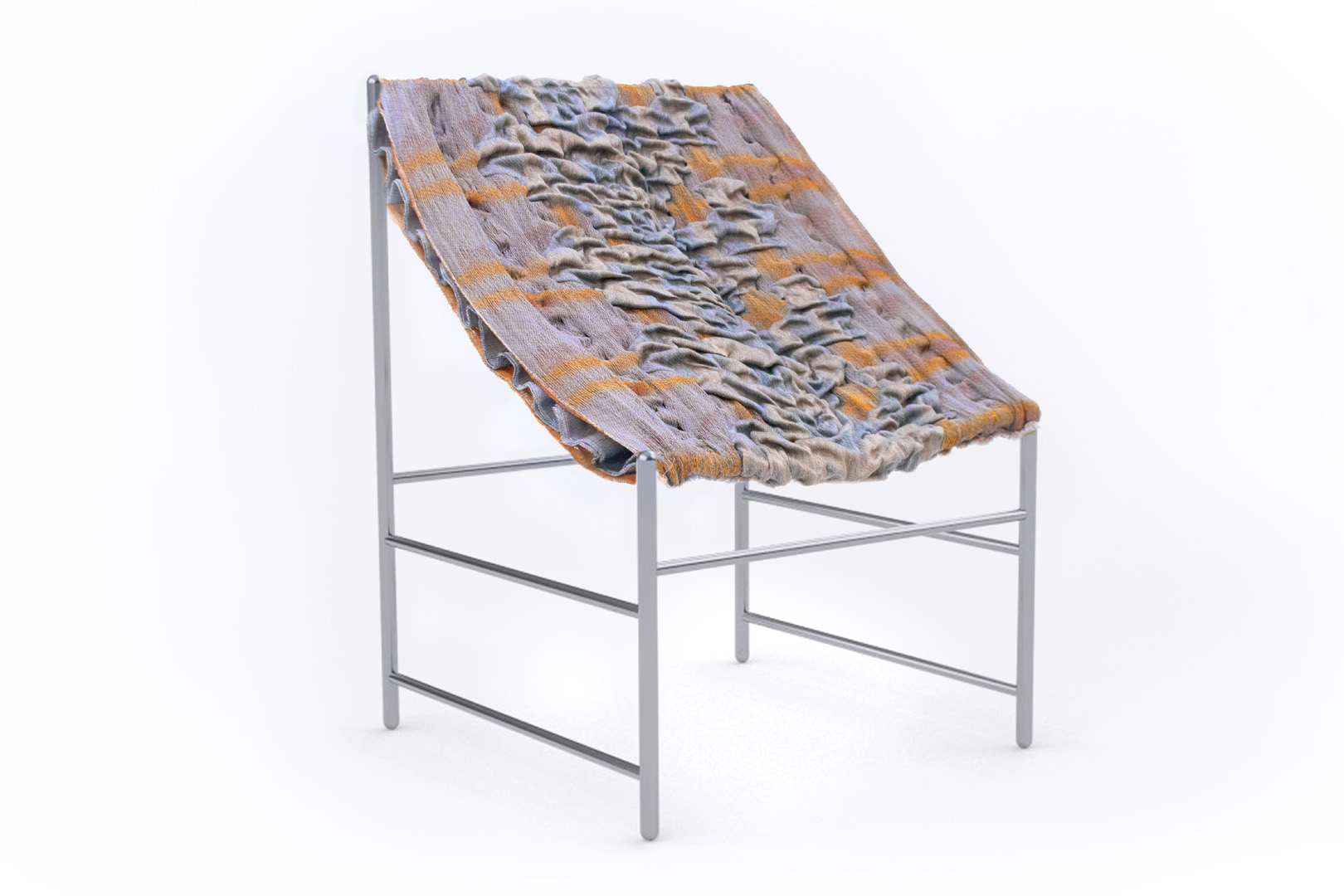“Woven Behavior and Ornamentation: Simulation-Assisted Design and” by Meiklejohn, Devlin, Dunnigan, Johnson, Zhang, et al. …
Conference:
Type(s):
Entry Number: 05
Title:
- Woven Behavior and Ornamentation: Simulation-Assisted Design and
Presenter(s)/Author(s):
Abstract:
The class of self-shaping woven textiles are those that undergo a transformation in shape exhibiting three-dimensional behaviors due to the interplay between weave structure and active yarns that shrink, twist or otherwise move during finishing processes such as steaming. When weaving with active yarns to produce dimensional fabrics the unpredictability of the complex interactions involved typically necessitates arduous physical sampling for intentional design and use. Current weaving software, overwhelmingly reliant on 2D graphic depiction of woven fabric, is wholly unable to provide the predictive dimensional appearance of such fabrics that might lead to practical decision making and innovative design solutions. This paper describes an iterative workflow to design self-shaping woven fabrics, from simulation-assisted drafting to the creation of a library of woven behaviors categorized by attributes for seating design. This workflow is then used to inform the design of a new yarn-based simulator as well as to design and fabricate a textile-centric furniture piece in which these woven fabric behaviors and ornamentation are intentionally zoned to the form according to structural, ergonomic and aesthetic considerations.
References:
Gabriel Cirio, Jorge Lopez-Moreno, David Miraut, and Miguel A. Otaduy. 2014. Yarn-Level Simulation of Woven Cloth. ACM Trans. on Graphics (Proc. of ACM SIGGRAPH Asia) 33, 6 (2014). http: //www.gmrv.es/Publications/2014/CLMO14.Google Scholar
CLO3D. 2009. CLO — 3D Fashion Design Software. https://www.clo3d.com/.Google Scholar
Claire Harvey, Emily Holtzman, Joy Ko, Brooks Hagan, Rundong Wu, Steve Marschner, and David Kessler. 2019. Weaving objects: spatial design and functionality of 3D-woven textiles. Leonardo 52, 4 (2019), 381–388.Google ScholarCross Ref
Jonathan M. Kaldor, Doug L. James, and Steve Marschner. 2010. Efficient yarn-based cloth with adaptive contact linearization. In ACM Transactions on Graphics, Vol. 29. ACM, 105.Google ScholarDigital Library
Daniel Piker, 2014. Kangaroo3D. http://kangaroo3d.com/.Google Scholar
Jonathan Leaf, Rundong Wu, Eston Schweickart, Doug L James, and Steve Marschner. 2018. Interactive design of periodic yarn-level cloth patterns. In SIGGRAPH Asia 2018 Technical Papers. ACM, 202.Google Scholar
Vidya Narayanan, Lea Albaugh, Jessica Hodgins, Stelian Coros, and James Mccann. 2018. Automatic Machine Knitting of 3D Meshes. ACM Transactions on Graphics 37, 3, Article35.Google ScholarDigital Library
Pointcarre. 1988. Pointcarre. http://www.pointcarre.com/.Google Scholar
Georg Sperl, Rahul Narain, and Chris Wojtan. 2020. Homogenized yarn-level cloth. ACM Transactions on Graphics 39, 4 (2020), 48–1.Google ScholarDigital Library
Rundong Wu, Claire Harvey, Joy Xiaoji Zhang, Sean Kroszner, Brooks Hagan, and Steve Marschner. 2020a. Automatic Structure Synthesis for 3D Woven Relief. ACM Transactions on Graphics 39, 4.Google ScholarDigital Library
Rundong Wu, Joy Xiaoji Zhang, Jonathan Leaf, Xinru Hua, Ante Qu, Claire Harvey, Emily Holtzman, Joy Ko, Brooks Hagan, Doug James, François Guimbretière, and Steve Marschner. 2020b. Weavecraft: an interactive design and simulation tool for 3D weaving. ACM Transactions on Graphics 39, 6 (December 2020).Google ScholarDigital Library
Cem Yuksel, Jonathan M. Kaldor, Doug L. James, and Steve Marschner. 2012. Stitch meshes for modeling knitted clothing with yarn-level detail. ACM Transactions on Graphics 31, 4 (2012), 37.Google ScholarDigital Library




